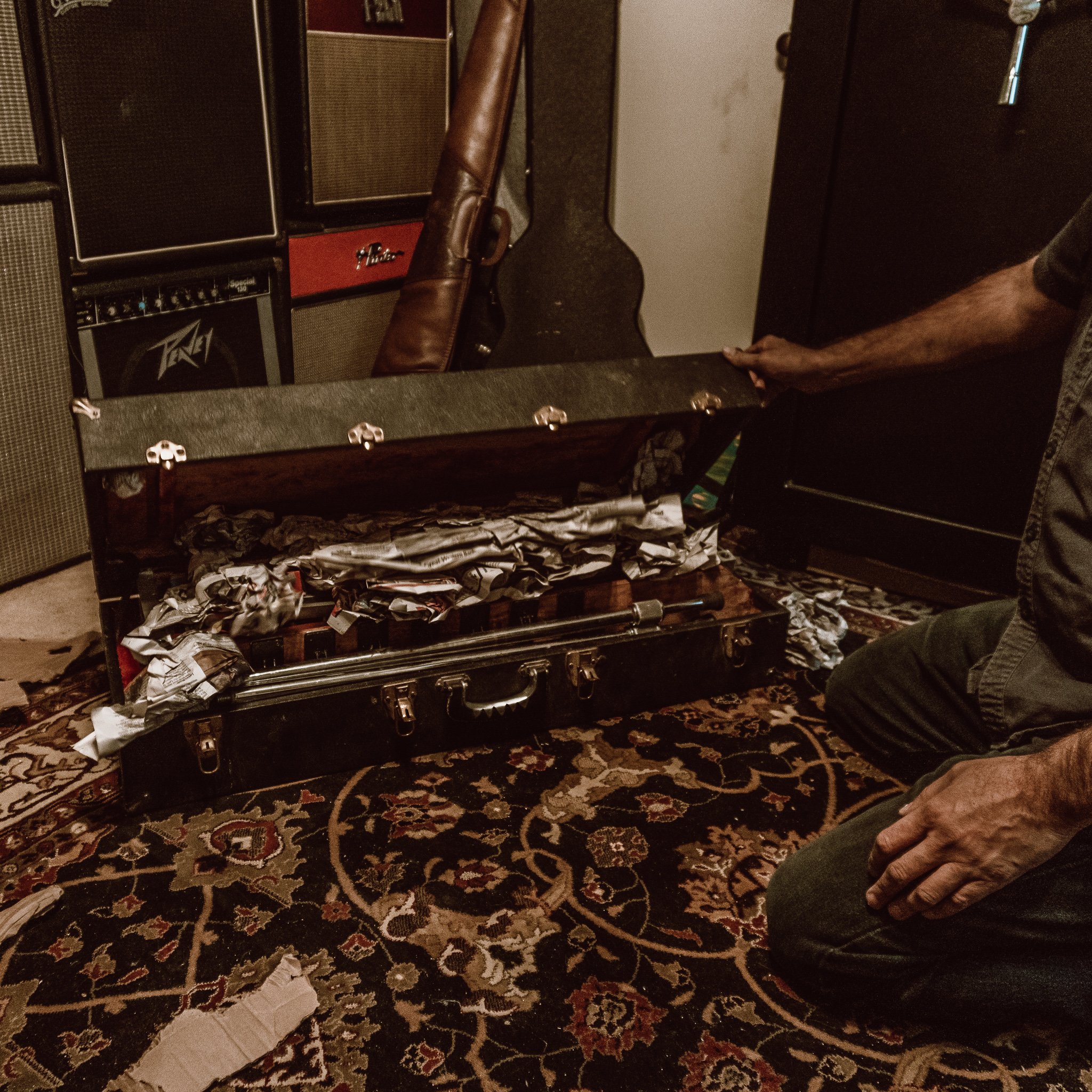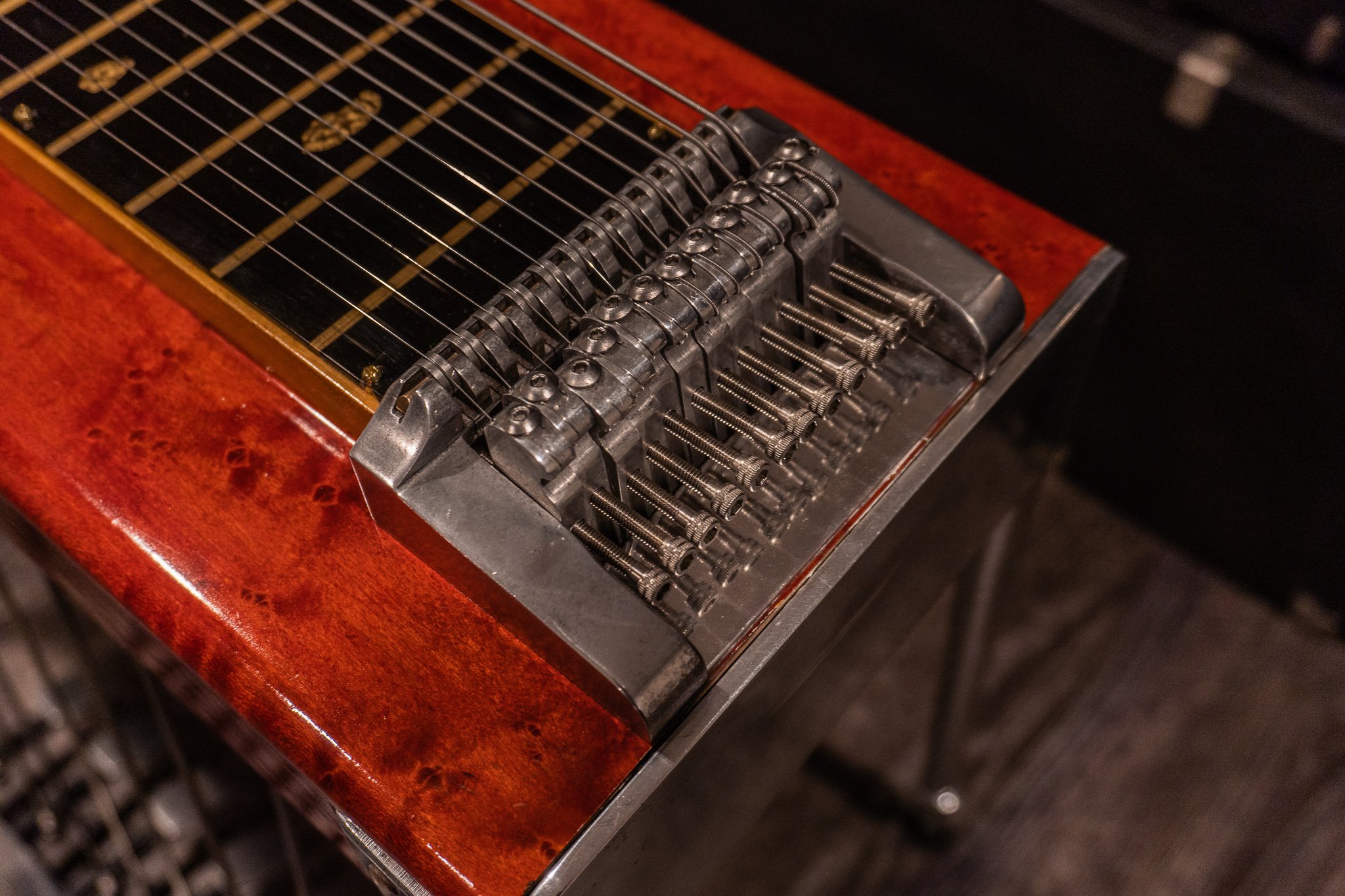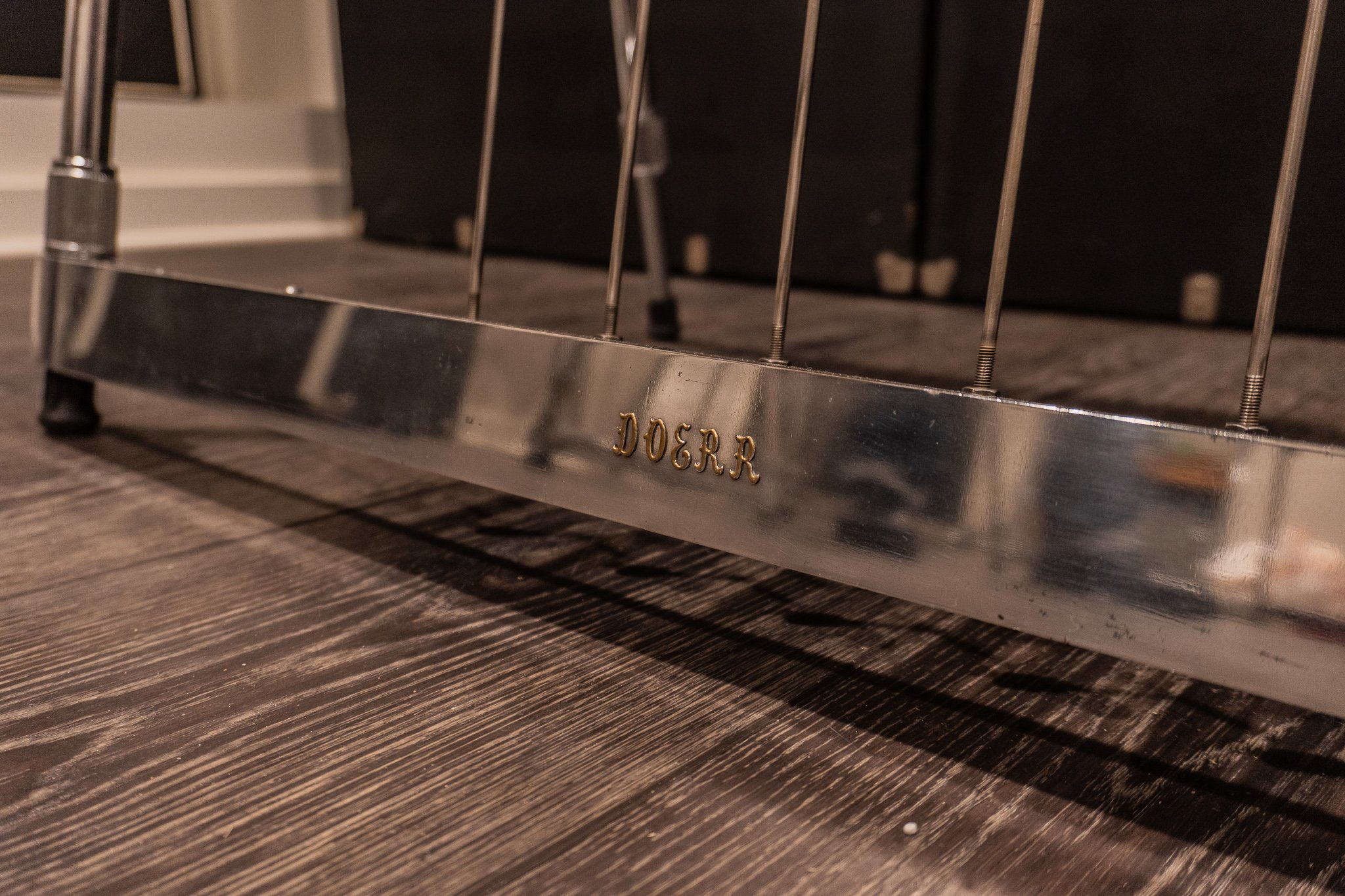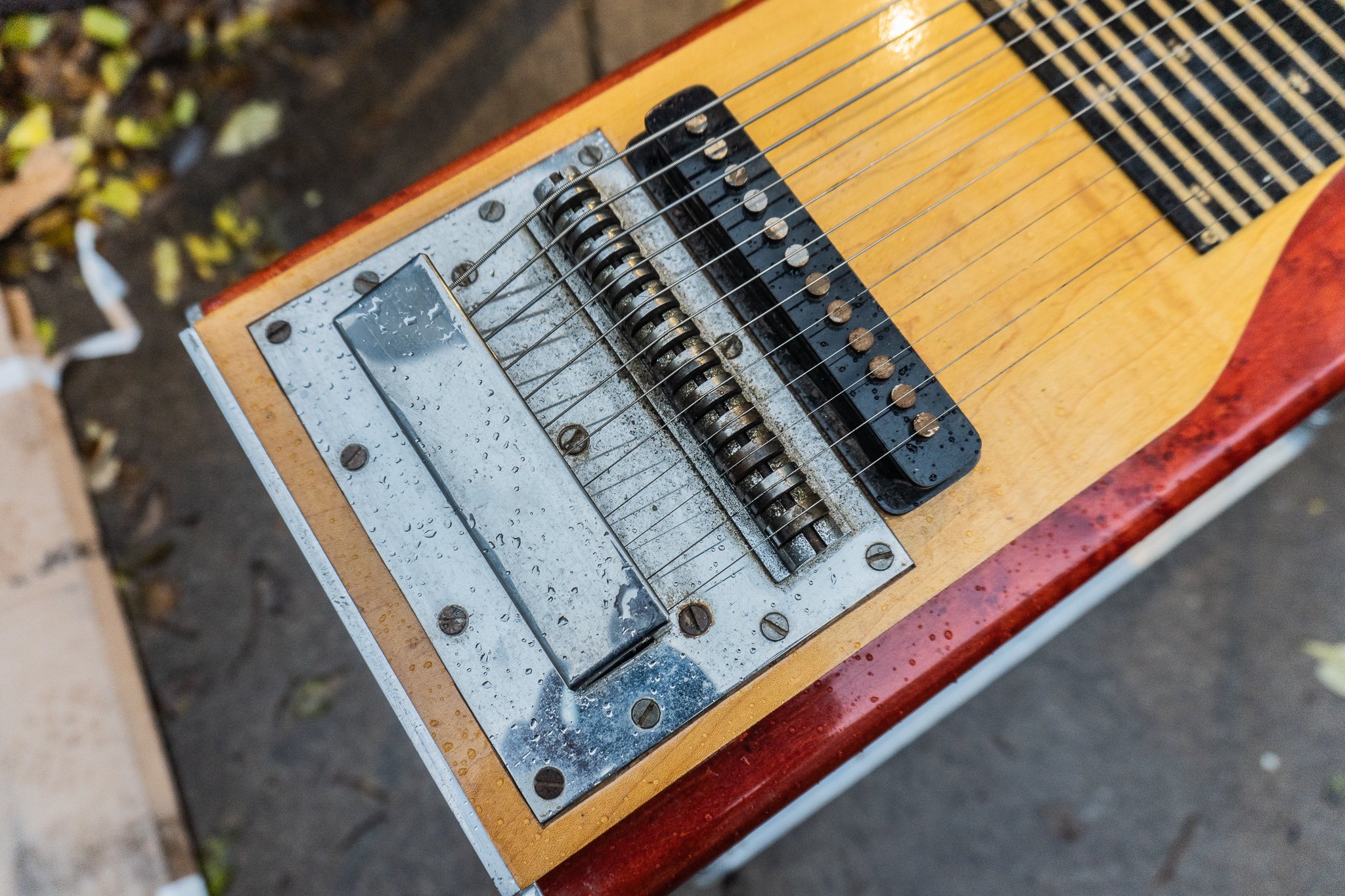Doerr
This is the story of an Industrial Artist and Luthier, Ray Doerr, and his custom built pedal steel guitar.
This extremely well custom built U12 7x6 is the only one I’ve had the pleasure of seeing and owning. The family tells me there were a handful built but the whereabouts of only one is known.
The son-in-law of Ray contacted me about the Doerr.
Ray’s son-in-law sent me a few grainy pictures and I was very intrigued. He was not an avid steel player but knowledgeable with instruments as a string player himself.
We had a great time talking over the phone about the steel
and Ray’s accomplishments.
It wasn’t getting played and even though it was part of their family history he wanted to sell it to someone that would fix it up and be appreciated by someone like it deserved.
Ray Doerr was an Industrial Arts teacher from 1971-1986.
He was born in Agar South Dakota in 1930. He had a family and moved to California from 1960-1964. In 1971 they moved to Mobridge until 1986. Then on to Pierre from 1986 until his passing in the 90’s.
Outside of teaching he was a luthier.
He built violins, mandolins, guitars and many other amazing things. They weren't just instruments. More along the lines of playable works of art.
Ray’s son-in-law spoke very highly about him and it sounds like others including students did too. Sometime after Ray’s passing he acquired the steel. We struck a deal and decided shipping was the route to go.
I anxiously awaited its arrival.
I contacted my friend Mel to capture the opening of it.
It arrived on a dark rainy day.
At first I couldn’t get past how amazing the handle was. A stock handle with an artistic add on style and grip. A solid 81 lbs on my scale. I finally cracked it open.
It was better than any Christmas I could remember.
He sent some extras with it that were placed throughout the case. Like little surprises as I went along.
Four tone bars.
Two of them were Emmons and one Roy Smeck.
Also a larger hollow brass bar
that might’ve been made by Ray.
Then I found a very old bulk violin string box containing finger picks.
Then two very neat little tools…
One was a three sided multitool for
adjusting and tuning the steel.
The other one I never figured out.
It’s a long flexible screwdriver with a hex head. Maybe a tool for another steel or something else he built.
When I went to pull out the steel I noticed a few parts were laying in the bottom of the leg compartment but getting it up on its feet went well.
It was astounding to see in person.
It needed some TLC but it really was a work of art.
It was tough not to plug it in right away and start tinkering but Mel was on cloud nine taking pictures of it and all the extras it came with.
I immediately inspected the changer when I started cleaning it up. It was nothing like I'd seen before.
The roller bridge extends down into the body cavity and is the pivot point for the fingers. I also noticed that strings pull and release from a much straighter angle because the fingers stick up above the body.
It is a very efficient, integral design.
The rest of the undercarriage is very well built.
The cross shafts and bell cranks are all forged from hardened steel.
Sho-Bud style pull rods were used
and typical nylon tuning nuts.
The knee levers are highly polished chrome.
The keyless head is very precise and made from aluminum. Each finger is numbered.
It didn’t need a full disassembly. Just a good cleaning and some corrosion removal. I took apart the keyless head and each one had their own place according to string size and finger width.
The roller nuts in particular needed the most attention. Lots of corrosion. Also made of hardened steel.
Before
After
The pedal bar is very well built too.
The raised Doerr lettering is the coolest part.
The pedals are made of steel with aluminum plates attached. They were a bit beat up and rusty so I sanded them down and repainted all seven.
Otherwise it polished up very nicely.
The pedal rods are the typical style that you’d see on
Sho-Bud and many other brands.
The pickup was made by Ray also.
At first I thought it was black but it's actually a clear smoky color of plastic he used. The wide pole magnets had a little surface rust but not too bad.
You can see the before and after photos below.
The body and end plates polished up very nicely.
I cleaned and oiled the changer and mechanisms. The fret board needed new screws. It's a piece of plexiglass that was scored and painted from underneath.
It strung up nicely.
The pickup has a very bright vintage tone to it,
50’s and 60’s in sound.
The case was in good exterior shape but the inside was a little rough. The fabric was completely gone and the cradles were broken and no longer attached.
Before
After
I sent it out to be reupholstered and asked to be surprised with a color. I was definitely surprised. It came back with a super cool funky print that mimics the handle design.
Like many steels I get in,
I wish I could go back and start all over.
It was great to hear about Ray and his accomplishments. To see the steel first hand and get it up and playing again.
I wonder if this one was an example for his classroom.
It seems like many specific examples of industrial art were applied here. I hope and wish I’ll get to experience another someday.
Thank you Mr. Ray Doerr.
Truly one of a kind.
It’s still looking for a new owner and home.
Tap the link below to check out the listing
with more technical details and photos.





































